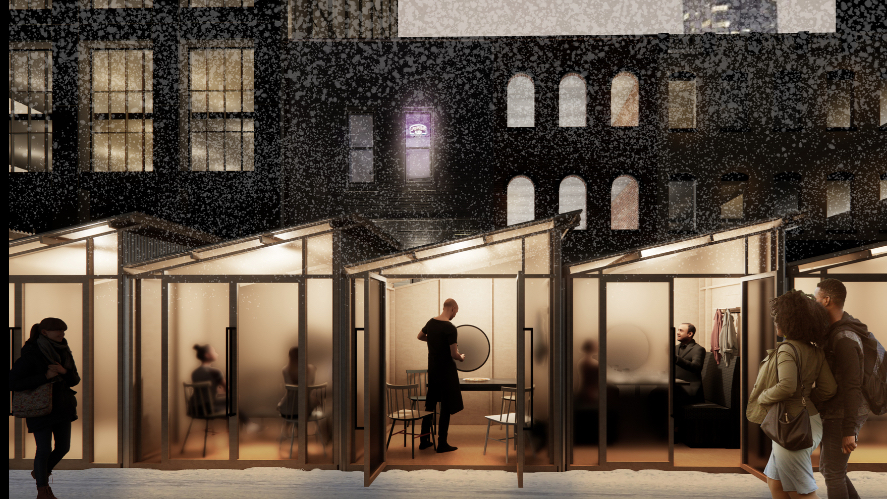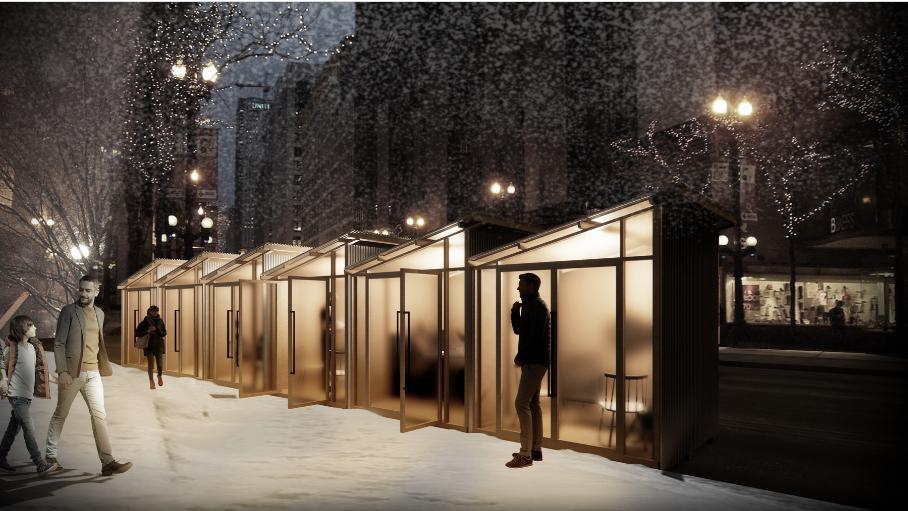After Mayor Bill de Blasio announced that
outdoor dining could continue year-round, there was a cheer — and then worry about a chill. Just how practical can eating in streeteries be when winter sets in?
One attempted solution is the so-called “
space bubbles” an Upper West Side café is trying out. But a new concept from the architecture firm Woods Bagot and Arup might be more scalable and pleasant: a prefabricated, modular restaurant made of plywood, with a simple canopy that could be fitted with vinyl or polycarbonate during the winter, like a greenhouse, or with a shade-giving material in the summer, like a cabana.
Aside from the wood canopy, the streetery concept looks like many of the other plywood enclosures that have popped up across the city already. But the secret sauce is all in how it’s put together.
Woods Bagot and Arup prioritized designing something that someone could build quickly — important given that construction in the street is challenging and restaurants do not have time for a lengthy build-out — and for not a lot of money. They began by basing the measurements on standard sizes of hardware-store plywood sheets and beams. Next, they used a type of joinery that slots together so that restaurants could assemble them without needing a lot of tools. And importantly: If they decide not to stay open year-round, they can disassemble them and put the parts in storage for use next year.







:format(webp)/cdn.vox-cdn.com/uploads/chorus_image/image/67588632/201002_NN_Open_Restaurant_Winter_Woods_Bagot.0.jpg)